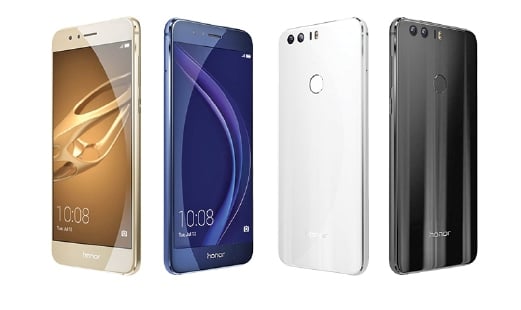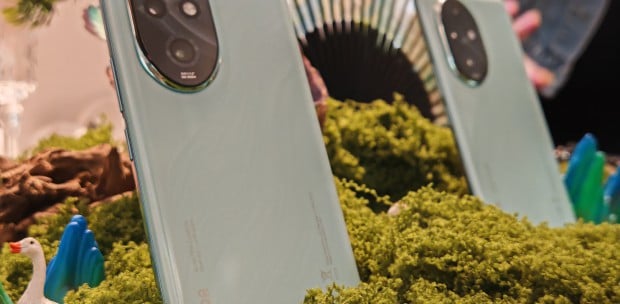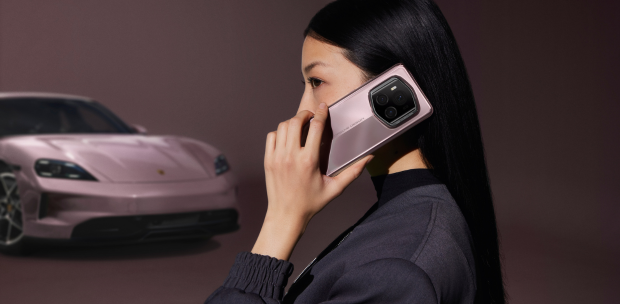Honor 8 is Huawei’s mid-range smartphone with a premium feel, writes Hanna Sheikh Mokhtar
THE Honor 8 smartphone comes in a pretty jewellery-like box. There is a slot where the phone is inserted sideways and a small ribbon serves as a handle for you to pull out the accessories that come with the phone.
All in all, the little package the Honor 8 comes in manages to give this mid-range phone gives a rather premium feel. The Honor 8 bears a striking resemblance to the P9 but upon closer inspection, it is thicker at 7.9mm versus the P9’s 7mm and heavier at 153g versus the P9’s 144g. Its corners are also slightly more rounded than the P9.
All the ports and antenna bands are in the same position, and it sports a thin bezel around the display to give it that premium look.
MORE ON DESIGN
When it comes to design though, the conversation starter for this mid-range phone would have to be its dual glass panel design. Its glossy, reflective rear panel coating is constructed from 15 layers of glass which Huawei says has 3D grating and lithography. This makes the prism lines refract and disperse light in an eye-catching manner.
Although it makes the back cover look pretty, the phone becomes so slippery that it is difficult to make it stay on anything but a dead-flat surface. The glass has what is described as an “ice cube effect” where it slips and slides very easily. It’s probably wise to invest in a case but it’s rather a shame to have to cover the beautiful kaleidoscopic back though.
To complement its design, the phone comes in four beautiful colours — pearl white, midnight black, sapphire blue and sunrise gold. I’m told sapphire blue is really striking and eye-catching, but the midnight black that I tested wasn’t too bad either.
HARDWARE AND SOFTWARE
The Honor 8 uses one of Huawei’s own chips, the octa-core Kirin 950 processor with i5 co-processor (the Kirin 950 offers comparable performance to that of the high-end Qualcomm Snapdragon 820). This is paired with 4GB RAM, and in day-to-day use, the phone performed smoothly without any stutter or slowdown.
Apps were quick to open and pages fast to load, which is what you’d expect of a more expensive device. The phone comes with 32GB of storage but if you are willing to give up one of the SIM card slots, you can expand the storage via microSD card to up to 128GB. A 64GB version is also available for a higher price.
A pet peeve of anyone using Huawei’s phones seems to be the use of its version of Android 6 Marshmallow called Emotion UI (EMUI) 4.1 as a skin. The Emotion UI is an Android-based user interface that reinforces Huawei’s user-centric design philosophy Design with Empathy. Contrary to the philosophy though, the EMUI is at times dysfunctional. For one thing, it doesn’t have an app drawer, so over time, your home-screen may end up looking cluttered.
There are some decent customisations, however. The slide-down gesture on the rear fingerprint sensor can pull down the notifications panel (more on this later). The notification shade itself has been changed to a two-panel layout with a timeline-style listing of events, while the overview of recently used apps is a flat, sliding carousel of app images, rather than a vertical stack of apps we are used to in an Android phone.
On a more positive note, the EMUI has much more aggressive power-saving features. Under power-saving mode, the phone shuts down problem apps and severely limits what can be active when the screen is off by default.
FEATURES
A nifty feature is the IR blaster at the top of the phone that can be used to control TVs and other connected household appliances. This is a good addition, I feel, as most of us always have our phones in hand.
Another feature is the fingerprint scanner. Despite being a level four sensor only, it works just as well as the sensor in the P9. The scanner has been upgraded with a Smart Key function, which means you can programme shortcuts to single- or double-presses and holds. I found using it to quickly fire up the Camera app particularly useful.
The Honor 8 comes with a USB-Type C port. This is annoying as I wasn’t able to swap chargers as all my other phones used a USB-Type B port. A good thing about this port though is the reversible shape so I can basically plug in the charger to the phone with my eyes closed now.
CAMERA
The phone has the same twin 12-megapixel camera set up as the P9 and performance is just as good. One camera is colour and the other monochrome, which is used to boost the amount of light information captured, making for better low-light performance. Although it lacks the Leica branding the P9 boasts of, the colour reproduction, detail in images and low-light performance is very similar.
Overall, I found that even though it sometimes struggles to focus, it is capable of producing good but not spectacular images. The 8-megapixel selfie camera takes flattering photos that are on the soft side, which would be considered a good thing.
DISPLAY
A minor complaint with the Honor 8 has to do with the auto-brightness setting. If you turned it on, it can sometimes be a little aggressive in adjusting the brightness, even if the ambient light hasn’t changed. On the other hand, it can be a bit slow to adjust when you first try to wake the phone up. At times, it would wake up to very dim brightness before adjusting to a more suitable higher brightness setting.
Other than this setback, the Honor 8’s 5.2in display, with a Full HD resolution of 1920 x 1080 is sharp enough, displaying vibrant and punchy colours. Some of the colour reproduction could have been more accurate however, but overall, the display’s colour temperature is very cool.
Another cool display feature is a blue filter mode called Eye Comfort. This tweaks the colour temperature to make it less harsh at night. Other than that, there are other colour temperature tweaks such as making it warmer or cooler.
VERDICT
I highly recommend the Honor 8 to the younger crowd because it presents what many have wanted from an affordable flagship phone for a while now — gorgeous design, smaller size and a good camera. The Honor 8 is available for RM1,699 for the 32GB variant while the 64GB variant is RM1,899.






